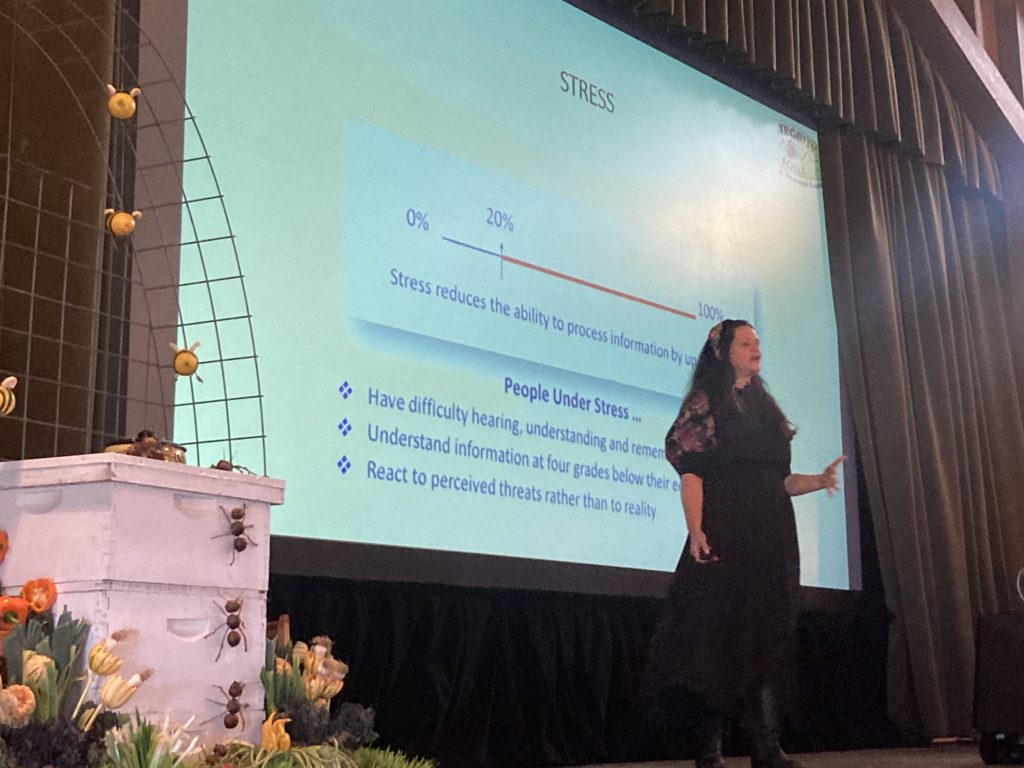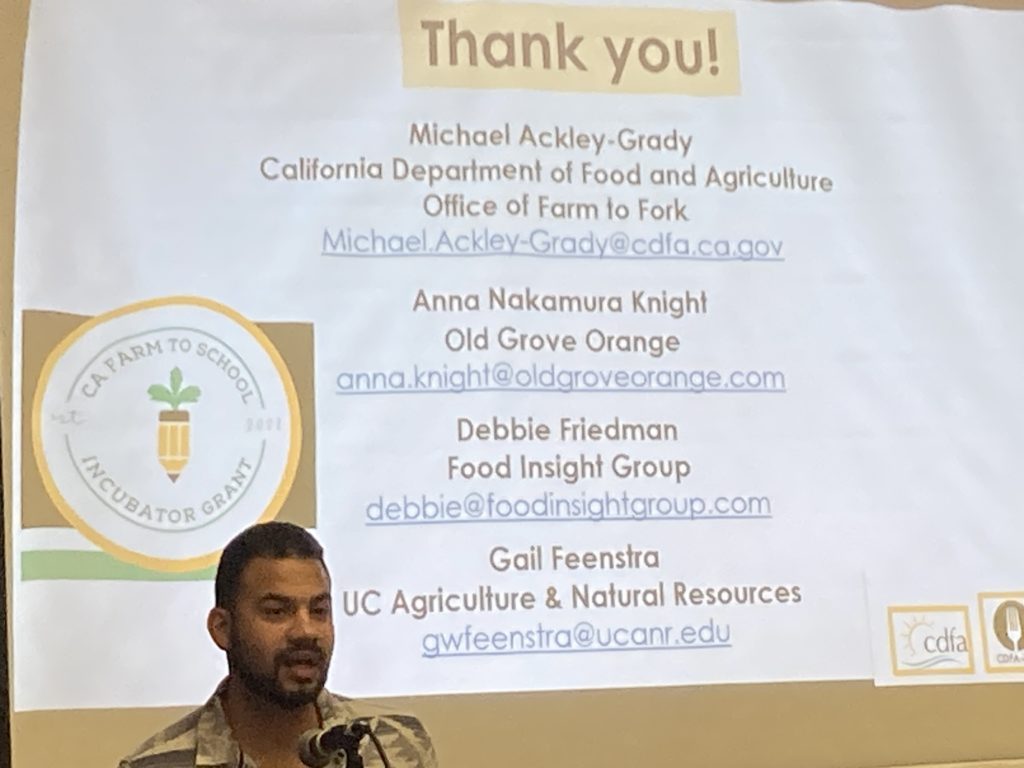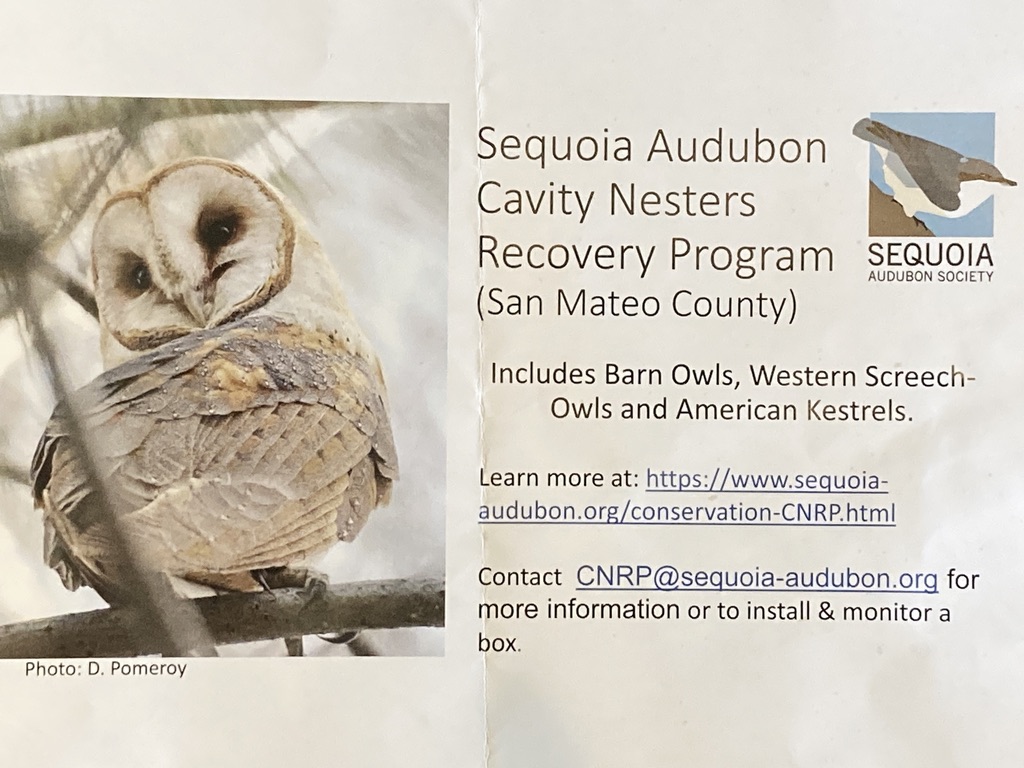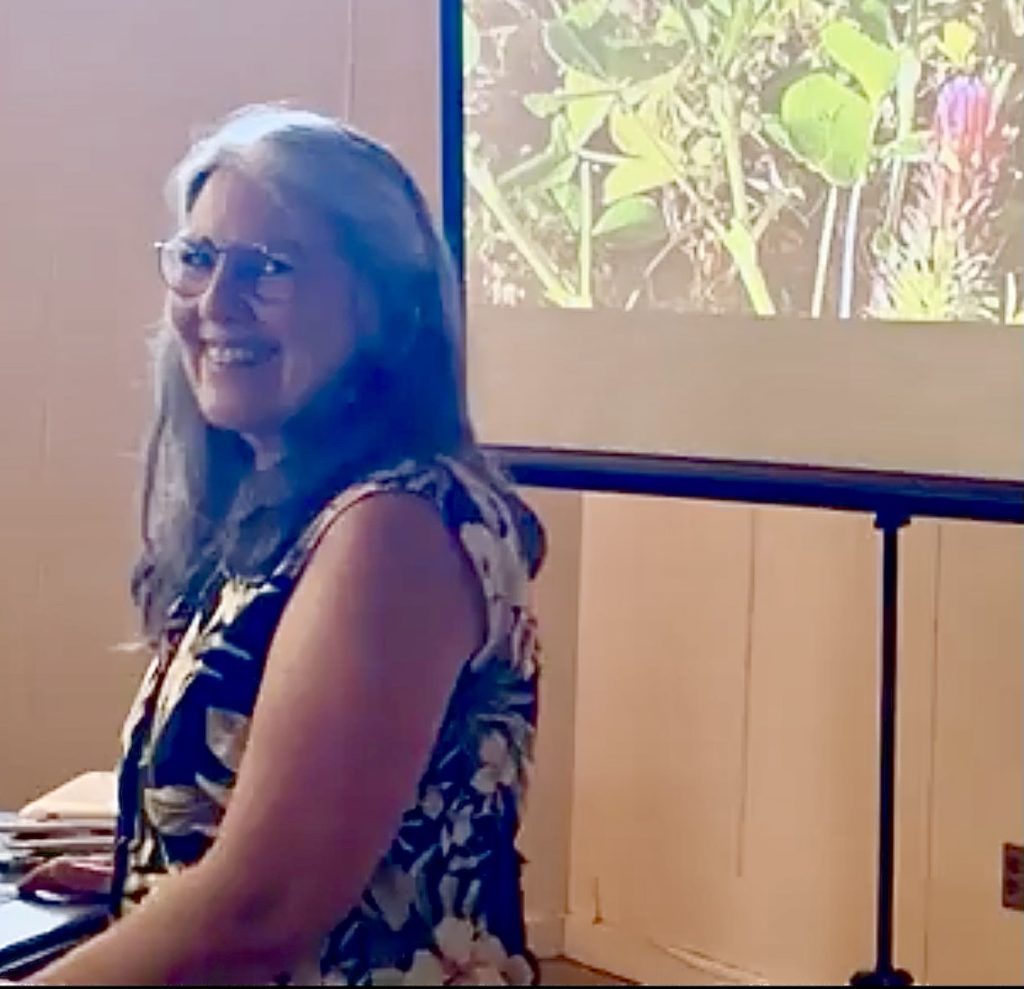I enjoyed this conversation with Christie Wilhelmi of the Gardenerd! Get garden-smart and gain new perspectives by tuning in regularly to the Gardenerd Tip of the Week Podcast. https://www.youtube.com/@Gardenerd
Why Food Sovereignty Matters
Get more connection and agency over your life, starting with your Food Supply.

GLOBAL VIEW: Vandana Shiva, the leading spokesperson for smallholder farmers and food sovereignty in a world increasingly dominated by consolidated corporations, speaks eloquently. Taking back control of our food supply is essentially a community affair, in every country and province. Learn more here.
Eating rituals used to exist in a much simpler world of supply and demand. One hundred years ago in America, nearly everyone had a vegetable garden, and many kept chickens or other domestic animals for meat. Neighbors shared and exchanged food gifts frequently. A child accompanying a parent to the grocery store was aware of where milk comes from, even if the family didn’t have it’s own cow.
Today, by not inviting children to think about where all the food comes from, we are training them to be complicit in their own poisoning. Most of us misunderstand or have an oversimplified picture of what is really going on with our food supply. Making good food choices is difficult in a world of junk that masquerades as food. Young people today eat more junk and fast food than ever. Even (especially) in school! As a part time teacher who has worked in California and Hawai’i, I am astounded by the poor food choices that pass as normal. Normal poisoning is more like it. We know better. How is this possible? Shouldn’t we question who profits when a population is addicted to a non-nutritive ‘food’ system? The problem spans all social strata, and is probably the real ‘conspiracy’ everyone should be thinking about and acting upon.
Industrial agriculture promotes a narrative of domination about what constitutes healthy food and a robust food supply. Despite longstanding organic activism and consumer demands for pure safe food; the global industrial ag economy seems like an unstoppable juggernaut, intent on co-opting revolutions to control greater and greater shares of the profit pie. Technical advancements have enabled large monocultures of organic carrots, for example (‘optimized to scale’) that classify as Organic even with minimal biodiversity and little attention to the nutritional value of the crop. Nowadays you can call hydroponic berries, lettuce and tomatoes ‘organic’, even though they are grown in soilless solutions with little root biology. See: The Real Organic Project
Advocates for conventional large scale agriculture are not very interested in monitoring the actual nutritional value of crops, or assessing how growing practices affect crop nutritional values. The drive to ‘scale’ agriculture to feed the world without farmers is another dangerous and disastrous mindset many are unaware of also. It’s important to stand up for and support small/medium and family farms and prevent them from being gobbled up by corporate farming or taken over by secretive special interests.
GE (genetically engineered) crops involve increasingly complex contracts that dictate farmers’ choices with expert combinations of economic and legal pressures. These controlling tactics functionally emasculate farmers and ultimately put consumers and the entire food system at risk. Biotechnology has ushered in a fast paced era of industrial agriculture, fueled by profit motives. Regulators are ironically now regulated by the established monopolizing industrial ag players. Oversight by Federal agencies such as EPA, FDA and USDA is inadequate
The issues are complex and in many ways overwhelming, but there are tools for action. Glimpsing these threats of industrial agriculture, we see the implications of consumer ignorance and farmer compliance which further the status quo.
Comments and Suggestions:
- Insist that the FDA, EPA and USDA monitor the development and use of GE crops and products and enforce safety protocols. Check out the work of Cal GE Free (Occidental Arts and Ecology), Western Organization of Resource Councils (WORC), Hawaii GE Free
- Overreliance on pesticides for soil and plant health is a fool’s game. Learn: Pesticide Action Network
- Community Alliance with Family Farmers is an organization that supports small family farms and keeps farm sovereignty proponents connected and able to respond to action appeals.
- The Cornucopia Institute works tirelessly to make our food supply more transparent to consumers so we can make informed choices. We need watchdog organizations and standards bearing professionals to champion the work so that average eaters can be aware and act impactfully.
- It’s important to be more direct in our relationship with food. Support local farming and organic agriculture by buying from CSA’s (Community Supported Agriculture) visiting farmers markets and engaging with food banks and other food hubs.
- Pay attention to the quality of the menus in Public Schools. Support Farm to School initiatives that provide healthier lunches to students, better wages for food service workers and and additional market share for local food producers.
- Check out the “Slow Food” Movement online at www.slowfood.org and seek to choose foods which are produced in a manner that is ecologically sound, economically viable and socially just (sustainable).
- Tune in to the farmers and farm communities that are actively defending their right to exist. Support the courage of the truth tellers, like Sonja Trom Eayrs, whose new book Dodge County, Incorporated: Big Ag and the Undoing of Rural America dares to document truth and confront power.
- Industrialized meat production is unsavory, unsanitary and dangerous. If you care to eat meat, choose free range or humanely produced products with bonafide certification. The incredible waste in many types of ocean fishing is unsustainable and damaging to ocean biodiversity and health. Choose “dolphin-safe” tuna. Guides are available from Monterey Bay Aquarium and the Center for Food Safety.
- Encourage your friends and relatives to understand the importance of Real Organic whole foods and help them eliminate Highly Processed Foods (HPF’s). To better understand the point of view of farmers who are champions of Real Organic farming standards, follow and Support the Real Organic Project.
Most of All, grow your own garden! Even if you only have space in pots, you can still have homegrown produce. Organic gardening resources include Rodale and The Mother Earth News. Even in a small space it’s possible to make compost and create healthy plant teas. Need ideas or a free consult? I’m happy to help.
Filed under Uncategorized
Insights from the 44th EcoFarm Conference 2024
Early each year old timers and young farmers convene at the Asilomar Conference Center in Pacific Grove, CA to learn, share and grow. For the first 30 years or so, The EcoFarm Conference was off limits to many due to it’s high cost to attend. Noticing the lack of diversity, attendees have sought ways to create inclusivity, bringing the voices of younger and culturally marginalized farmers into the mix. Finally it seems to be happening.
The founders of this conference are getting old now. While it’s nice to see familiar faces from the dawn of the Organic Agriculture Movement; real change agents who have made the world a better place through their hard work and vision for healthy food production, I was glad to see many new faces this year. The next generation is poised to give real traction to this movement. I put my hope in them and offer supportive reflections on where the movement is headed.
- Digital Chaos and Sensory Overload: In her Keynote presentation, Nicole Masters highlighted the costs of this relatively new challenge, and where we get stuck. While many of us have achieved some practical working knowledge of how to successfully manage a farm and make a living, the fog of stress/anxiety has reached levels today that are truly debilitating to many people, everywhere. Nicole’s presentation addressed this elephant in the room. How can you be effective if your stress is causing paralysis? Action Steps: Acknowledge it, Practice Self Care, Lead Ecologically. Many in the west do not grieve well; instead stuffing feelings which can later manifest as illness. Her assistant began to lead a ‘keening’ call and response ritual which was interrupted by a protester admonishing the group for forgetting Gaza. It was a missed opportunity. Had we been arranged in a circle, carers might quickly have gathered him in to create a true healing space. As it was, he was ejected and the keening proceeded. In that context this exercise felt a bit empty and performative, however well-intentioned. My hope is that organizers will learn from this and set procedures in place to better handle protest, grief and the trauma of attendees.
- Decolonizing our Food Supply: By acknowledging the roots of colonization that have historically determined agricultural approaches, and connecting these practices to systems of oppression, the community is developing a more conscious, representative and inclusive way forward. I imagine that by the time all us old timers are gone the language, style and organization of these gatherings will be completely different, in a good way.
- Indigenous-led #landback initiatives: There is increasing support from ranchers and farm enterprises such as Pie Ranch and The Deep Medicine Circle here in California. Hawaiian women leaders of MO’A on Oahu gave inspiring presentations to show how their program is empowering young people through growing and distributing fresh food locally. These efforts to educate young farmers as land stewards while reclaiming spiritual traditions and food sovereignty are the most exciting and positive trends I see moving forward. These indigenous-led models are rightly celebrated and should receive greater support from funders and donors.
- Another inspiring talk on the main stage came from Doria Robinson of Urban Tilth in Richmond. Her long-time organizing work and leadership serves not only to create more green spaces, but to empower local people to grow quality food for local consumption, in a place long considered to be a ‘food desert’. Her presentation showed how growing community gardens can be a foundation for systemic changemaking in local government. Doria also sits on the CA State Board of Agriculture’s Regenerative Agriculture Definition Working Group.
- Images below: Nicole Masters, David Mas Masumoto, Organic peach grower and author of Secret Harvests, Farm To School.



Filed under Uncategorized
Town of Woodside Takes a Stand on Pesticides
Here’s some good news I’m celebrating. To promote a healthier environment and enhance public education, the town’s Environment and Open Space Committee has taken a bold step and declared Poison-Free Woodside. Many residents already seek pesticide free approaches, but this effort will help to assure that everyone understands and can comply. I feel blessed to live in a town with deeper than average awareness of environmental issues and the will to always do better.
As I previously shared in the piece What Can We Learn from P-22? anticoagulant rodenticides threaten wildlife from both direct and secondary exposures. There is strong and mounting evidence that these materials can bio-magnify up the food chain in ways not dissimilar to DDT and its notorious derivatives which inspired Rachel Carson to sound the alarm with Silent Spring.
At a recent meeting the volunteer organization, R.A.T.S. (Raptors Are The Solution) presented helpful information for understanding the changing regulations and how to better protect against the poisoning of non target animals. Alternatives, such as the contraceptive approaches now being tested in Seattle show great promise, but we must always be wary of the industry’s tendency to simply substitute equally toxic substances instead of finding true alternatives.
Rather than rush for poisons, residents and the service professionals they employ are encouraged to learn about enhancing habitat for pest rodents’ natural predators. You can receive nest box placement and management support by calling Sequoia Adubon Society’s Cavity Nesters Recovery Program.

Filed under Uncategorized
Gardening with Gophers
Here’s the talk from the Heirloom Expo. September 12, 2023
Gardening with Gophers Sept. 12, 2023

Gardening with Gophers
Filed under Uncategorized
What Can We Learn From P-22?
Life of famous California mountain lion sheds light on the dangers humans pose to wildlife, and points to a better way forward.

In December of 2022 the famed Los Angeles mountain lion P-22 was euthanized, following a storied life of urban danger, carnage and mayhem. Much can be said of him; Notably the admiration and pride he inspired in Angelinos and native people who could identify with his will to survive true to his nature, in a world that essentially denies that. Laid to rest in a private tribal ceremony, this mountain lion has become an elder, a teacher, a cautionary tale. Here’s more on the remarkable life of a celebrity mountain lion.
It is known that P-22 survived at least one collision with a motor vehicle. He suffered illnesses related to constant proximity to humans and their chemical counterparts. Rodenticides played a role in his illnesses. The first- and second-generation types of anti-coagulant poisons commonly used today sicken and kill many non-target predators and carrion eaters, including raptors and pets.
P-22 was repeatedly poisoned by rodenticides that sickened him, leading to secondary infections such as mange. See this list of commonly sold rat poisons that you should try to avoid, because of the danger to non-target species!
Audubon Society and the Bio Integral Resource Center‘s Guide: Protecting Raptors from Rodenticides (Common Sense Pest Control Quarterly Special Issue 2011, Published January 2013) offers important insights on how we can take measures and enlist nature’s help to safely reduce rodent populations. It is important to establish an integrated approach, utilizing all available least toxic methods. Innovations such as birth control are being developed to control rats. An example of Biological Control is when we encourage our friends of the forest to feast on rodents by providing improved habitat such as perches and nest boxes. Combining and coordinating multiple approaches is the key to effective Integrated Pest Management.
While a lot is mentioned of secondary poisonings such as occurred with P-22 who suffered years of sub-lethal effects from eating poisoned prey, primary poisonings also exact a cost to non-target species. Primary poisonings occur when an animal directly ingests poison baits. They are designed for palatability, so pets and many other non-target animals can easily be poisoned if allowed access. Non-target species may include woodmice, field voles, bank voles and even insectivorous birds!
Much of this information comes from the BIRC publication: Protecting Raptors from Rodenticides which can be purchased from BIRC at this link: The Integrated Pest Management Specialists. Please support this important non-profit that promotes ecologically sound approaches for reducing pesticide use and protecting our environment.
Best Practices for dealing with a Rat Infestation
- Address any sanitation gaps and secure all trash and food sources, indoors and outside.
- Regularly check for gaps where rats can gain entry -and seal them.
- Remove dense landscape plantings such as Ivy (Hedera ssp) that provide harborage and pathways and facilitate entry into dwellings and structures. Prune tree branches away from buildings to prevent wall and roof access.
- Use trapping methods to reduce populations (An entire course could be taught on this.)
- Least Toxic Method: RatX uses a bait approach, but the lethal mode of action is dehydration from corn gluten, not chemical poisoning; thus eliminating the possibility of secondary poisonings.
- If using professional abatement services, ask about least toxic options such as RatX and birth control baits such as Contrapest (currently only available through licensing agreement)
- Use conventional rat baits only as a last resort if trapping and other methods fail. (First generation rat baits such as warfarin are less toxic to non target species than second generation rat baits such as bromethalin and Vitamin D-3)
- Always use exclusion measures to avoid accidental poisonings, and check bait stations often.
- Regularly monitor for rats and check for re-colonization. Keep awake to new methods.
- Establish perches and nest boxes to encourage raptors appropriate to your area.
- Build a Barn Owl Nest Box
- Build a Kestrel or Screech Owl Nest Box
- How to Attract Raptors
Special thanks to Ron Whitehurst of Rincon Vitova Insectaries for the info about RatX!
Can you add to this list? Thoughts to share about P-22? I’d love to hear from you!
Filed under Uncategorized
